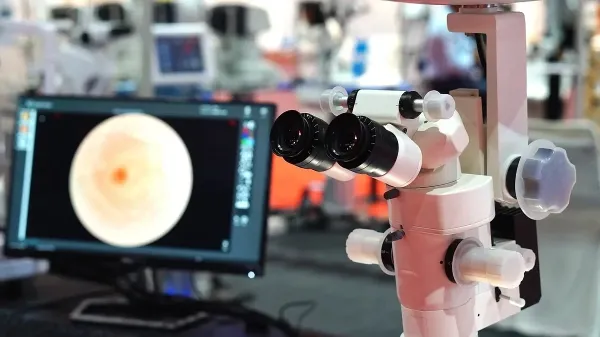Lack of awareness about the retrieval procedure is another - many mistakenly believe they can donate an eye while alive, but eye donation only occurs after death.
Corneal blindness is said to be the most common treatable form of blindness. Doctors note that a single cornea can benefit at least two people suffering from corneal blindness, with transplant success rates as high as 80%. Recipients often include newborns with corneal scratches, schoolchildren injured in the eye, road accident victims, and farmers who suffer from fungal infections during harvesting season.
At Dr Rajkumar Eye Bank, run by Narayana Nethralaya in Rajajinagar, about 50 pairs of eyes are donated each month, but the waitlist averages 100 patients. "We register 5-10 new patients daily for corneal transplants but can perform only 3-4 surgeries," said manager Veeresh M P M. He clarifies that about 70% of corneas are suitable for transplant. Donations from people with HIV, hepatitis B, liver cirrhosis, head and neck cancer, or dog-bite injuries may get rejected after testing.
Sharing the challenges of eye donation, Veeresh notes that families sometimes withdraw their consent at the last minute, and about half the time, their staff returns empty-handed from hospitals.
The Lions International Eye Bank near Lalbagh receives around 3,000 donations annually, of which 75% are used, yet it faces a monthly waitlist of about 50 patients. "Most eye donation pledges come from the youth, but only 4% result in actual donations," said Dr Rekha Gyanchand, its corneal consultant and medical director. She points out that often such people don't inform their families about their decision. At the time of death, it's difficult to convince grieving families to proceed with something as practical as donation, as they are overwhelmed by emotion.
Corneas are allotted to patients based on priority, categorised as follows: emergencies include infections, accidental injuries, and bilateral blindness; urgent cases typically involve children and young adults; and routine cases usually involve elderly patients losing vision in one eye. "Most demand for corneal grafting comes from the urgent group," Dr Rekha says.
At Shraddha Eye Bank, part of Nethradhama Super Speciality Eye Hospital in Jayanagar, about 20 people are on the waitlist every month - a number that has risen steadily. "It may be due to better awareness that corneal blindness can be treated," says its executive director Dr Sushmitha Sriganesh. Still, the gap is stark. "For every 10 people requiring a transplant, only one person donates," she says. The centre organises initiatives online (through social media, website, email campaigns and e-pledge cards) and offline (through posters, banners and community events) to spread the message of virtues of eye donation, reaching college students and corporate professionals.
Dr Sowmyalatha M, cornea consultant at Dr M C Modi Eye Hospital in west Bengaluru, says they get 2-3 transplant cases a month, mostly patients over 50 from rural backgrounds. The hospital currently has a waitlist of more than 10.
Dr Hareesh K V, medical director, Abhishek Nethradhama, Yelahanka New Town, has seen more enthusiasm about eye donation in rural areas than in Bengaluru, driven by word-of-mouth from beneficiaries. Their Eye Donation Motivation Centre works with social organisations to raise awareness about eye donation among citizens. Through these efforts, they have collected around 60 pairs of eyes over the past five years. However, the eye donation centre in Doddaballapur has recorded significantly higher donations.
Highlighting the importance of eye donation, Dr Rekha shares a recent case: "An eight-year-old boy with vague vision underwent surgery. After regaining his sight, he was overjoyed to see the coloured gel pens I gave him. His mother says he now looks forward to going to school every day." Veeresh adds that actress B Saroja Devi, who passed away last month, had donated her eyes, which benefited two underprivileged individuals.
Who can donate?
According to Dr Rekha Gyanchand, anybody between the ages of 2 and 100 is eligible to donate, including those who have undergone cataract or laser correction surgery. Typically, only the corneal tissue is harvested and is used fully or partially depending on the case. If the entire eyeball is removed, it is replaced with a prosthetic. Cornea removal procedure is free of cost. Donated corneas are also available for free. Eye donation must be done within 6-8 hours of a person's death, and transplanted within 14 days.
To pledge/enquire, contact
* 9740556666 (Lions International Eye Bank)
* 97416 85555/88840 18800 (Dr Rajkumar Eye Bank)
* 97310 81808 (Shraddha Eye Bank)
70% donors in Karnataka from B'luru
According to M K Krishna, former chairperson of the Eye Bank Association of India (South Zone), Karnataka has risen from 8th place in 2013-2014 to 3rd in 2024-2025, recording about 5,300 donations during this period. Tamil Nadu and Andhra Pradesh top the list. "Nearly 70% of Karnataka's eye donations come from Bengaluru," he said.
Despite the progress, Krishna stresses the need for more donors, noting that corneal blindness can only be cured through a transplant. In contrast, cataracts and other vision issues can be treated with surgery or glasses.
Causes
Cornea transplant specialist Dr Nagesh B N shares the causes of corneal blindness: in children, it is often due to vitamin A deficiency and viral infections; in teenagers, chemical injuries (such as limestone falling into the eyes) are common; and in adults, road traffic accidents, occupational hazards, and viral keratitis are some causes.
